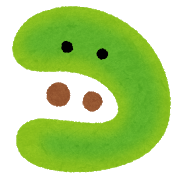Bacteriostatic: How does it different from Antibacterial ?

Since the beginning of the pandemic, the term ‘Antibacterial Processing’ becomes so popular that you can hear about it even from people outside the industry. Recently, more and more inquiries about antibacterial products are coming, so this time, we would like to dive deep into the details. In this article, we will explain what the term “Bacteriostatic” means and how it works, as well as ”Antibacterial”, which is sound like a similar term but has a different effect.
Bacteriostatic processing vs Antibacterial processing
Many people have heard the term “Antibacterial” But what about ”Bacteriostatic “? Compared to “Antibacterial” , ”Bacteriostatic ” may be less familiar. “Antibacterial” is mainly a technology to control odor. It suppresses the growth of bacteria to the extent that no unpleasant odor is generated. On the other hand, ”Bacteriostatic ” prevents the growth of bacteria that have adhered to the fibers.
- Bacteriostatic Processing: Inhibit the growth of bacteria on fibers and to prevent the growth of bacteria harmful to the body.
- Antibacterial Processing: Inhibit the growth of Staphylococcus aureus, which causes odor, and to prevent odor.
While Antibacterial Processing is only for controlling odor bacteria, Bacteriostatic Processing is expected to have a great effect in preventing the growth of harmful bacteria. The fact that it is also used for medical clothing shows that it is more advanced than antibacterial processing.
Bacteriostatic finishing Certificate
The Japan Textile Evaluation and Technology Council (JTETC) has established a certification system (voluntary standards for the industry) called the SEK Mark. The JTETC has established voluntary standards for labeling terms, evaluation methods and standards, and safety of textile products with antibacterial and deodorizing treatment, and has implemented a system that allows products that have passed the standards to display the SEK Mark. The SEK mark includes not only Antibacterial and Deodorizing finishing, but also Bacteriostatic finising, Anti-fungal finising, Anti-virus finising, Stain-resistant finising and so on. SEK mark guarantees the quality and functionality of the fabric.
Different types of SEK mark
The Japan Textile Evaluation Technology Council conducts tests to evaluate the safety and performance of textile products in terms of both the processing agents used and the products, and certifies products that meet the two requirements with the SEK mark. There are four types of marks for antimicrobial treatment of textile products, depending on the application and processing.
Blue SEK mark:Antibacterial and Deodorant processing

Fabric has this symbol is preventing the growth of bacteria on fibers and exhibits an odor control effect. The standard is used for a wide range of textile products, including socks and towels (It is an international standard for antibacterial and deodorant treatment is established in JIS L 1902 and ISO 20743).
Orange SEK mark: Bacteriostatic processing

Supressing skin indigenous bacteria and harmful bacteria on fibers, preventing them from growing.
Usually use for general purpose, like textile products for household or F&B industry.
Red SEK mark: Another Bacteriostatic processing symbol

This symbol is specific use products, targeted for professional textile products used in medical institutions and nursing care facilities.
Purple SEK mark: Photocatalytic antibacterial processing

The photocatalytic effect inhibits the growth of bacteria on the fiber. Photocatalytic agents, such as titanium dioxide, generate active oxygen on the surface when exposed to ultraviolet or other light. This generates a strong oxidizing power, which decomposes and removes organic matter. (Staphylococcus aureus and Klebsiella pneumoniae were used as test bacteria.) It is used in practical applications such as shirts and other clothing, curtains and other interior products.
Conclusion
During CO-VID 19, functioning fabric are become more and more popular. It’s not enough to just add antibacterial properties, we also need to judge the quality of the fabric base on the purpose of the product.
What is your favorite functional fabric that you discovered recently? For more functional fabrics, please visit our Functional Products Page.
If you have any requests for fabrics or accessories & trims , feel free to contact us at ApparelX.

